Microbial Communities Under Distinct Thermal and Geochemical Regimes in Axial and Off-Axis Sediments of Guaymas Basin
- PMID: 33643265
- PMCID: PMC7906980
- DOI: 10.3389/fmicb.2021.633649
Microbial Communities Under Distinct Thermal and Geochemical Regimes in Axial and Off-Axis Sediments of Guaymas Basin
Abstract
Cold seeps and hydrothermal vents are seafloor habitats fueled by subsurface energy sources. Both habitat types coexist in Guaymas Basin in the Gulf of California, providing an opportunity to compare microbial communities with distinct physiologies adapted to different thermal regimes. Hydrothermally active sites in the southern Guaymas Basin axial valley, and cold seep sites at Octopus Mound, a carbonate mound with abundant methanotrophic cold seep fauna at the Central Seep location on the northern off-axis flanking regions, show consistent geochemical and microbial differences between hot, temperate, cold seep, and background sites. The changing microbial actors include autotrophic and heterotrophic bacterial and archaeal lineages that catalyze sulfur, nitrogen, and methane cycling, organic matter degradation, and hydrocarbon oxidation. Thermal, biogeochemical, and microbiological characteristics of the sampling locations indicate that sediment thermal regime and seep-derived or hydrothermal energy sources structure the microbial communities at the sediment surface.
Keywords: Guaymas Basin; archaea; bacteria; cold seep; hydrothermal sediment; porewater profiles.
Copyright © 2021 Teske, Wegener, Chanton, White, MacGregor, Hoer, de Beer, Zhuang, Saxton, Joye, Lizarralde, Soule and Ruff.
Conflict of interest statement
The authors declare that the research was conducted in the absence of any commercial or financial relationships that could be construed as a potential conflict of interest.
Figures

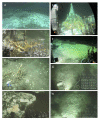
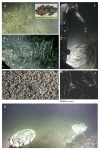

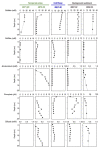

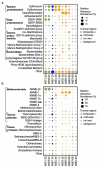
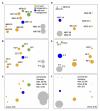



References
-
- Beaulieu S. E., Szafranski K. M. (2020). InterRidge Global Database of active submarine hydrothermal vent fields. Version 3.4. PANGAEA. 10.1594/PANGAEA.917894 - DOI
-
- Berndt C., Hensen C., Mortera-Gutierrez C., Sarkar S., Geilert S., Schmidt M., et al. . (2016). Rifting under steam – how magmatism triggers methane venting from sedimentary basins. Geology 44, 767–770. 10.1130/G38049.1 - DOI
-
- Bray J. R., Curtis J. T. (1957). An ordination of the upland forest communities of southern Wisconsin. Ecol. Monogr. 27, 326–349.
LinkOut - more resources
Full Text Sources
Other Literature Sources

